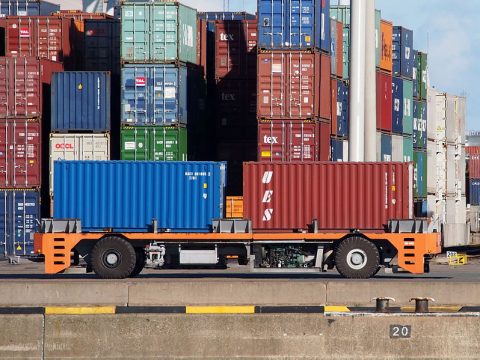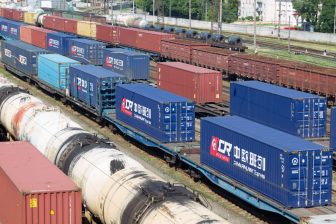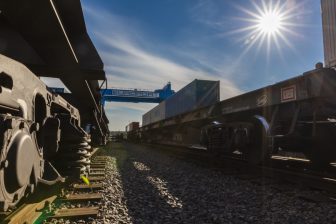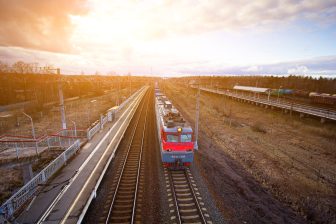
New Silk Road threat to Schiphol Airport, not Port of Rotterdam
The New Silk Road forms a threat to western airports, rather than sea ports, according to ING’s Economic Office. This could be especially true for the transport of more expensive consumer products such as medicines, electronics or flowers and semi-finished products. Western European airports such as Schiphol, Frankfurt and Liege will eventually be affected, the office concluded.
The ING Economic Office conducted a research into the choice of modality, comparing the rail option of the New Silk Road to air and sea freight between China and Europe. Schiphol traditionally has a strong focus on Asia. In 2017 a fifth of if its cargo volumes originated from China and Hong Kong. It is therefore one of the airports likely to face competition from the expanding Eurasian railway network, it stated.
Choice of transport
The choice of transport relies on three factors: time, costs, and Co2 emissions, the report reads. “Transport is a cost-driven activity, so rates are important. These costs vary by modality and depend, among other things, on distance and weight. Time however, also has a price because products are on the way and this results in capital costs. After all, the delivery requires working capital and this makes products time-sensitive.”
Having said this, the choice of transport starts with the desired speed of the delivery. Certain time-sensitive products such as smartphones and expensive medicines will always be delivered by air, while products promotional items will continue to be charted by ship. When this decision is less obvious, the products is eligible for rail transport: here the transport cost will be analysed and be the decisive factor for the mode of transport, ING believes.
Type of product
A good example of such products is Lenovo. One-and-a half year ago Lenovo decided to ship its products by train, whereas it was previously chartered by ship. “The lead time by ship is much longer. When Chinese rail operator CDIRS offered competitive rates, the decision was made to use rail by the electronics giant. With an attractive rate and shorter lead times, rail transport was clearly beneficial for the business model”, explained Dick van Beek, Global Logistics Director EMEA at Lenovo earlier.
“Westbound rail traffic currently mainly includes products such as electrical appliances (such as laptops and TV screens), clothing and toys. Eastbound trains are starting to carry products such as machines, auto parts, medicines, cosmetics and milk powder. Also the more expensive foods such as wine and fish products are potential products for rail transport on the New Silk Road.”, the report describes.
No competition for port
“Sea transport is the most efficient mode of transport due to economies of scale and available capacity for raw materials and cheap products. For the port of Rotterdam, the impact of the New Silk Road is therefore limited”, the office concludes. Indeed, the Port of Rotterdam has stated that the rail connection does not form a threat to its volumes. While a train carries 40 containers, a big ship transports 10,000.
It does however change the logistics landscape, it has admitted. “Rather than entering Europe through the Port of Rotterdam after travelling overseas, products manufactured in China are now transported through Europe, where Rotterdam is often at the end of the journey. The New Silk Road will increase the share of cargo transported via the swifter and more reliable option of rail. With the advance of the New Silk Road, Europe is also supplied via the Czech Republic, Poland and Greece; not just via Rotterdam, Hamburg and Antwerp”, Michel Jak, General Manager of SmartPort said before.
Growing importance
“The New Silk Road will continue to grow rapidly in the coming years, the ING office continues. “China invests billions in trade routes with the West. The New Silk Road by rail is still small, but has shown strong growth since 2013. Partly because of the importance that the Chinese government adhere to it, the growth is expected to continue in double digits in the coming years.”
The arrival of the New Silk Road also means that Eastern Europe is better accessible, noted the ING. “For logistics providers it does not matter how they serve European customers, but as an entry gate the Netherlands will have to get used to lying at the end of a route.” Nevertheless, the rail connection offers opportunities for companies, said Machiel Bode, ING Sector Banker Transport and Logistics. “The Silk Road is faster than sea transport and cheaper and greener than air transport. For an optimal choice of transport it is important for shippers and their logistics service providers to look at the total picture, including capital costs and pre- and post-transport. Combinations with air and/or sea freight can
then be interesting.”





